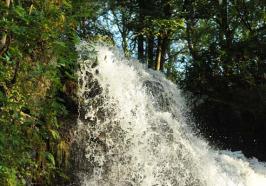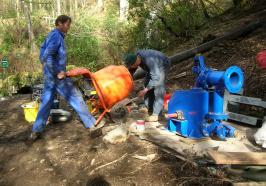Hydro-electric plant
The hydro-electric plant provides a small amount of electricity for the hostel. You can read about it here and on the information boards in the hostel. Subject to staff availability we can provide educational group tours of the hydro-electric plant (please contact us in advance of your visit). However, due to the hazards in the area, you cannot explore it independently. Please respect the no-entry signs and fenced-off areas.
A little bit of information...
The hydro-electric plant uses water from Barrow Beck, the stream which flows through our grounds. The source of the beck is on the Ashness Fells, between Bleaberry Fell and High Seat. Between its source and Ashness Bridge the stream is actually called Ashness Beck, but it becomes Barrow Beck from Ashness Bridge to Derwent Water.
There is a dam upstream of the cascades, with an overflow shute, sieve, and metal tank (Forebay Tank). The sieve prevents large debris from entering the tank. The tank is called a Settling Tank or Forebay Tank. By passing through the Forebay Tank, the water slows down and the suspended particles can settle out.
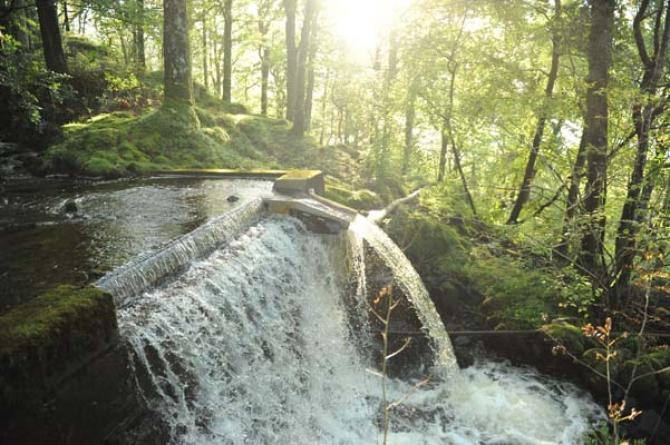
The photo above shows the dam, overflow shute, and sieve. In the background you can see the pressure pipe. The thin black pipe in the foreground is no longer used, but the hostel used to be dependent on the beck and this pipe for its water supply.
The water then passes into the pressure pipe or Penstock. This pipe delivers the water to the turbine, housed in the wooden shed by the stone bridge. The pipe follows the steep gradient of the hill-side.
The water falls a total of 30m between the dam and the turbine – this is a medium (>10m but <50m) head hydro-scheme. It is better for a hydro-scheme to have more head than flow, as this allows for smaller equipment.
The pressure pipe enters the shed and then splits in two, at right angles. The water then enters a box which contains the Pelton Wheel. The water fills the scoop paddles of the wheel and pushes it round.
The screw threads on the turbine control the flow of water and keep the power generation in phase with the mains. This is the complicated bit! It is the screw threads which sometimes stop working. The generator is linked to the mains electricity and the electricity is piped to the dishwasher in the hostel pot-wash room.
The turbine can convert energy at a rate of up to 7 kW, but it rarely goes above 5 kW (KW is a measure of Power). The meter shows the number of kWh that the turbine has produced. kWh is a measure of energy.
The government pays the hostel for the green electricity that the turbine provides. This is known as the Feed-In-Tariff. You get a certain amount per unit of electricity. It is usually a few thousand pounds per year. Unfortunately the Environment Agency charges the hostel for water abstraction, even though the water goes straight back into the stream after it has passed through the turbine!
The present hydro-electric plant is simply a modern replacement for an old technology. The original hydro-electric plant provided electricity for Barrow House during the Second World War – the hydro-electric plant is mentioned by some of the evacuees from Newcastle Central High School, who occupied Barrow House from 1939 to 1943. The young evacuees often had to try and fix the turbine! In the first twenty years of YHA ownership (1960s and 1970s) parts of the building were powered by the hydro-electric plant, but many of the fireplaces still burned coal.
In 2006 the hostel managers at the time, Dave Piercy and Kathy Morris, asked YHA to install a new hydro-electric plant at Barrow House. The planning stages involved a lot of different people and organisations, including the Lake District National Park Authority, Natural England (river bed and the SSSI), an ecologist, and the Environment Agency, but there was widespread support for the scheme, and decisions were made efficiently.
The present hydro-electric plant cost £44,000 to install, and it was installed by Miles Postlethwaite of Turbine Services in Cockermouth, who also helps with its maintenance. The plant and its installation were paid for by grant money: Clear Skies Government Fund, the YHA Green Fund, and the Lake District Sustainable Development Fund. The project was completed in December 2006.
Sources of further information
BBC News article about the hostel turbine (3rd Dec 2006): http://news.bbc.co.uk/1/hi/england/cumbria/6204246.stm
Whitehaven News article (Jan 2007): http://www.whitehavennews.co.uk/hostel-installs-a-hydro-scheme-1.1568?referrerPath=2.1681
A Guide to UK Mini-Hydro Developments: https://www.templateroller.com/template/2125445/a-guide-to-uk-mini-hydro-developments-the-british-hydropower-association.html
Three phase electric power: http://en.wikipedia.org/wiki/Three-phase_electric_power
Pelton Wheel: http://en.wikipedia.org/wiki/Pelton_wheel
Lodore SSSI: http://www.sssi.naturalengland.org.uk/Special/sssi/unitlist.cfm?sssi_id=1000308
Langdon Beck Hostel: http://www.yha.org.uk/hostel/langdon-beck
Turbine Services: http://turbineserviceslimited.com/
and: http://www.cumbriagreenbuild.org.uk/wp-content/uploads/2011/06/turbineservices-2007.pdf
Barrow House Landscape Gazeteer: http://archaeologydataservice.ac.uk/archives/archiveDownload?t=arch-700-1/dissemination/pdf/greenlan1-22228_1.pdf
British Hydro Association: http://www.british-hydro.org/index.html
Ellergreen Hydro Power Design and Delivery: http://www.ellergreen.com/hydro/
Feed In Tariff: https://www.gov.uk/feed-in-tariffs/overview
-
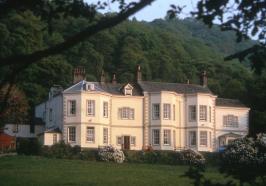 Derwentwater Independent Hostel
Derwentwater Independent Hostel -
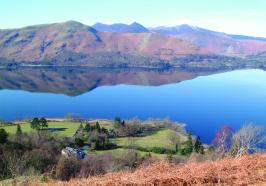 Looking down on the hostel
Looking down on the hostel -
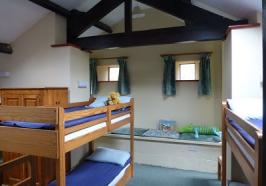 A bedroom in the modern annexe
A bedroom in the modern annexe -
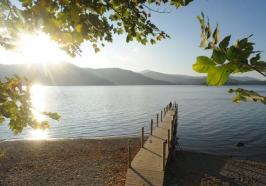 Evening light on Derwent Water
Evening light on Derwent Water -
 Barrow House in Spring
Barrow House in Spring -
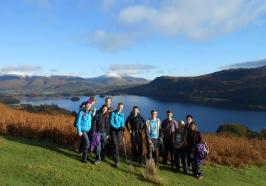 Inspiring local walks
Inspiring local walks -
 Red squirrels can be seen in our grounds
Red squirrels can be seen in our grounds -
View of Derwentwater Independent Hostel from a kayak
-
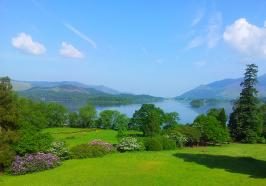 Spring-time view from Derwentwater Independent Hostel
Spring-time view from Derwentwater Independent Hostel -
 Room One, our largest dormitory
Room One, our largest dormitory -
Autumn colours by the waterfall
-
 A heron next to our waterfall
A heron next to our waterfall -
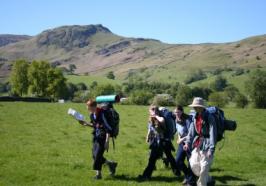 Spectacular local walks
Spectacular local walks -
You can see Derwent Island from the hostel grounds. It used to be owned by Joseph Pocklington, the wealthy bachelor who built Barrow House.
-
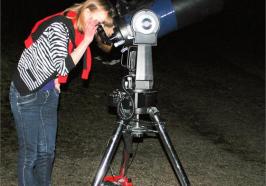 Astronomy workshops at Derwentwater Independent Hostel
Astronomy workshops at Derwentwater Independent Hostel -
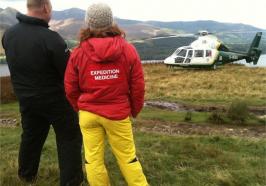 Expedition Medicine training at Derwentwater Indepedent Hostel
Expedition Medicine training at Derwentwater Indepedent Hostel -
 The dam of the hydro-electric plant in the Derwentwater Independent Hostel grounds
The dam of the hydro-electric plant in the Derwentwater Independent Hostel grounds -
Walking up the fells behind the hostel
-
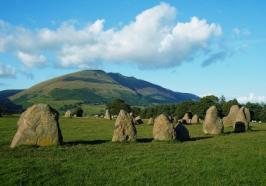 Castlerigg Stone Circle - a short walk from the hostel
Castlerigg Stone Circle - a short walk from the hostel -
 Ashness Bridge - at the top of the hostel waterfall path
Ashness Bridge - at the top of the hostel waterfall path -
 Mist on Derwentwater
Mist on Derwentwater -
 Keswick Launch on Derwentwater
Keswick Launch on Derwentwater -
 Clear night sky
Clear night sky -
View of Skiddaw Range from Falcon Crag (above the hostel)
-
 Half way up Cat Bells
Half way up Cat Bells -
 Keswick Christmas lights
Keswick Christmas lights -
 Bluebells near Buttermere
Bluebells near Buttermere -
 Many of our guests enjoy walking on the fells around Borrowdale
Many of our guests enjoy walking on the fells around Borrowdale -
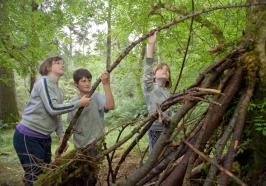 Building shelters in our woodland
Building shelters in our woodland -
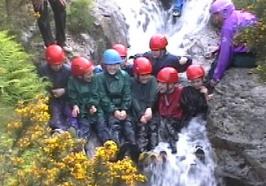 Our groups often enjoy adventurous activities in the Borrowdale Valley
Our groups often enjoy adventurous activities in the Borrowdale Valley -
.jpg) Sunset from the terrace in April
Sunset from the terrace in April -
.jpg) Some of the staff and volunteers with our giant Easter Egg
Some of the staff and volunteers with our giant Easter Egg -
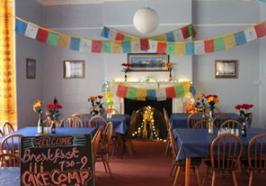 The dining room decorated for a wedding in 2014
The dining room decorated for a wedding in 2014 -
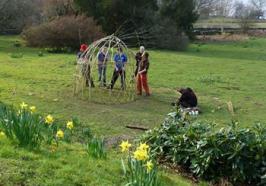 Conservation volunteers making a willow shelter in our grounds 2014
Conservation volunteers making a willow shelter in our grounds 2014 -
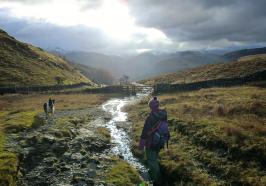 A local walk around Watendlath
A local walk around Watendlath -
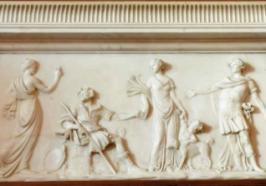 A close-up of the fireplace in Room One
A close-up of the fireplace in Room One -
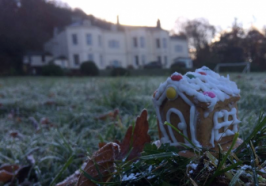 Gingerbread house in front of the real thing.
Gingerbread house in front of the real thing. -
 Staff take an evening walk along the lake shore.
Staff take an evening walk along the lake shore. -
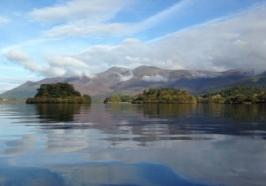 A very calm day on Derwent Water.
A very calm day on Derwent Water. -
A Mandarin duck on the lake shore.
-
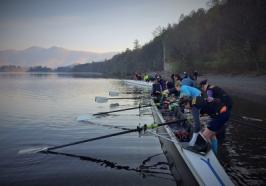 York Rowing Club training on Derwent Water during their stay with us.
York Rowing Club training on Derwent Water during their stay with us. -
Bugle flower in the hostel grounds
-
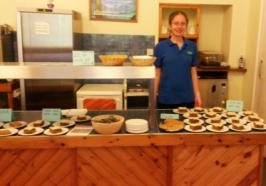 Tea and cake in the servery
Tea and cake in the servery -
 Winter walking
Winter walking -
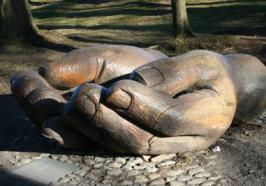 Wooden hands sculpture on west side of Derwent Water.
Wooden hands sculpture on west side of Derwent Water.


